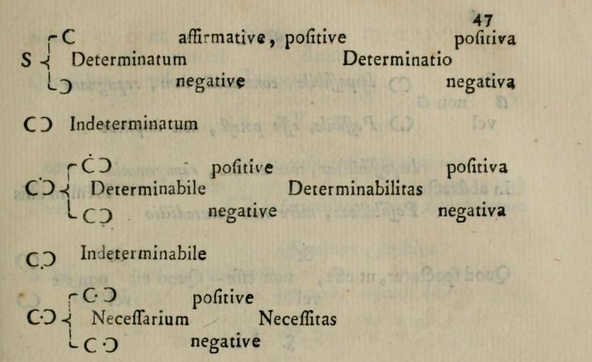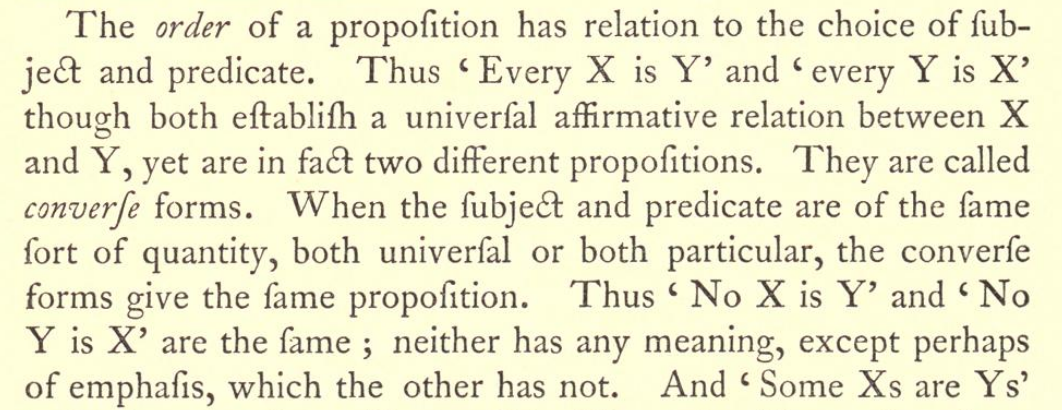Hello, Habr! I present to you the translation of the article "Math Origins: The Logical Ideas" by Erik R. Tou (University of Washington Tacoma).
From a translator:
A series of articles on the origins of mathematics in general and notation in particular was published in the journal of the Mathematical Association of America. The last two of the five articles published so far have seemed to me the most interesting, so I publish a translation of the first of them - “Math Origins: The Logical Ideas”.
As soon as a mathematics student gets his hand in mathematical analysis and statistics, there comes a moment when the logical superstructure of mathematics becomes apparent. This can manifest itself in the form of obvious questions, or at least a certain discomfort regarding the alleged reliability of mathematical truths. How can we be sure of the veracity of classical results - such as the Lagrange theorem or the central limit theorem? This is the point at which many undergraduate programs in mathematics begin to include a course in mathematical logic and thought.
According to the author’s own experience [ Eric Tou - approx. trans.], this usually includes a change in the order of ideas, from the “order of discoveries”, so common in solving problems, to the “order of logic”, which forms the foundation for mathematical proofs. It quickly becomes apparent that new terminology and notation are necessary in order to shed light on the mathematical statements and logical relations under consideration. Concepts such as conjunction and disjunction, implication and equivalence, universality and existentiality must be carefully separated. Today, the theory of logic and its inherent notation are considered inseparably: one does not exist independently of the other. However, this was not always the case! In this article, we will look at some early attempts to organize a theory of logic in a systematic way, along with several decisions made regarding notation. We'll see,that the authors of the 17th and 18th centuries were, essentially, interested in describing a way of thinking about logic, usually through an analogy with already existing mathematical or philosophical concepts. In the next article in this series, we will continue the narrative in the 19th and 20th centuries to explore the many notation systems proposed to describe logic.
, . «» «», . , , . 1659- «Teutsche Algebra» (« ») , . . :

. 1. «Teutsche Algebra» «» . Google Books , .
«» , ergo. , : 2 3 . . [Caj, . 212], «» «». , .
; 20 , .

. 2. «Teutsche Algebra» . Google Books , .
: , , . 3, 4 , «», 6. , , . — , , .
- , , , , , . ( — , ). , , , . , , : , . , . « », :
- , ;
- , ;
- , .
1666 , «Dissertatio de Arte Combinatoria» (« ») [Lei]. , , (1) -, (2) «» ( ) . , .
, , . , . 1679 , -, , . , «Regulæ ex quibus de bonitate consquentiarum formisque et modis syllogismorum categoryoricorum judicari potest per per numberros» («, , »). « » :
, ,
— , (, ) (.. , ) , ( , ). , , , , . , , . [Par, . 26]
. -, , . , , « , , ; ». «» «» «», «». [Tho, . 20], - . -, . . , . , . , « » , .
: «Algebræ Philosophicæ»
1761 , «Algebræ philosophicæ in usum artis inveniendi» (« , ») . , .



3. «Algebræ Philosphicæ» (1761). Archive.org , , .
, . , , , , , . : , , , , . , (aliquid) (nihil) () (), . , .

. 4. «Algebræ Philosphicæ» (1761). Archive.org , , London.
— , , ! , :
- (, ), (, );
- (), (, ), (, );
, , , , . , (), (). «Algebræ Philosphicæ» 16 , . , ! : «Dissertatio de Arte Combinatoria». , , - «Algebræ Philosphicæ».
Zeichenkunst in der Vernunftlehre
, , 1782 «Sechs Versuche einer Zeichenkunst in der Vernunftlehre» (« »). 5:

. 5. «Sechs Versuche einer Zeichenkunst in der Vernunftlehre» (1782). Google Books , .
, , . , ; , (), (), (), (), () (). , . , . ( , ).
, [Lam, . 11]. , , , , , . , «eigene Merkmale», « », «eigen-» . , , . , , , . , , , ( ) . , , , , . , , , .
…
, , . — — , , , . , , . , , , , , .
, ! 60 , « » ( « ») , . 1847 , , , «» «» « » . , «» , .

. 6. « » (1847). Archive.org , .
, «» « » . « », , . , 19- 20- , « » . , , . !
[Caj] Cajori, Florian. A History of Mathematical Notations, Volume II. Chicago: Open Court Publishing Co., 1928.
[DeM] De Morgan, Augustus. Formal Logic: or, the Calculus of Inference, Necessary and Probable. London: Taylor and Walton, 1847.
[Lam] Lambert, Johann. Sechs Versuche einer Zeichenkunst in der Vernunftlehre. Berlin, 1782.
[Lei] Leibniz, Gottfried Wilhelm, Dissertatio de arte combinatoria. Leipzig, 1666. «Philosophical Papers and Letters» (Leroy E. Loemker, , 2- ) 1969 . « ».
[Par] Parkinson, G. H. R., ed. Leibniz Logical Papers. Oxford: Clarendon Press, 1966. .
[Rah] Rahn, Johann. Teutsche Algebra . Zurich: JJ Bodmer, 1659.
[Ric] Richeri, Ludovico. "Algebrae philosophicae in usum artis inveniendi . " Melanges de philosophie et de la mathématique de la société royale de Turin . 1 (1760-61), 46-63.
[Tho] Thomson, Garrett. On Leibniz. Stamford, CT: Thomson Learning, 2001.